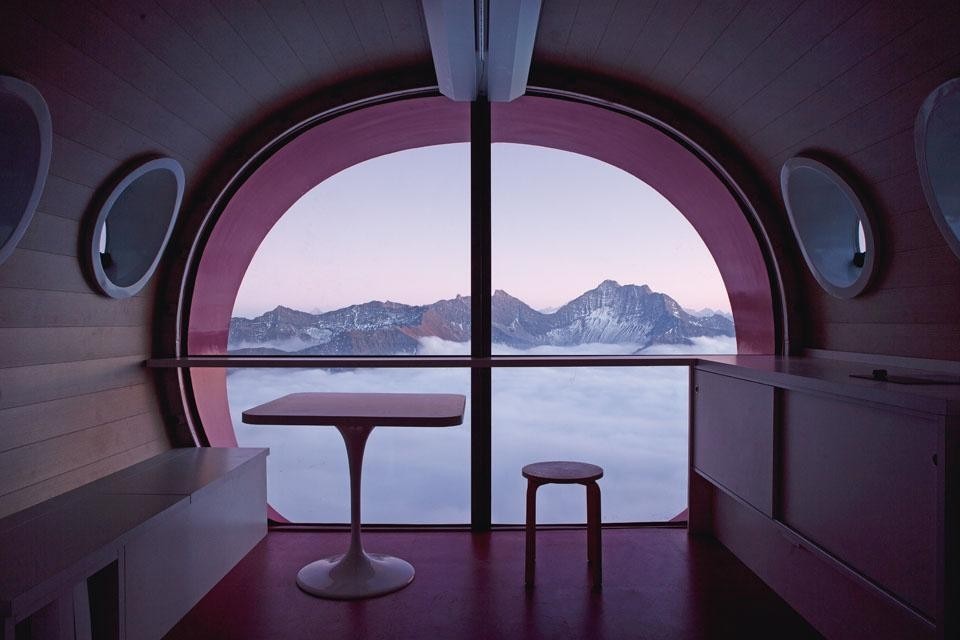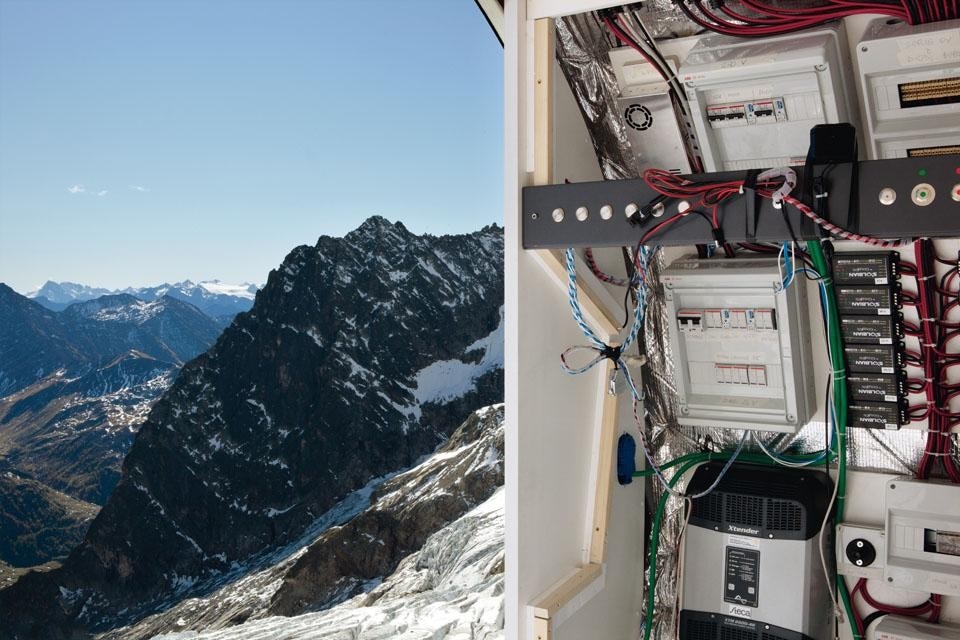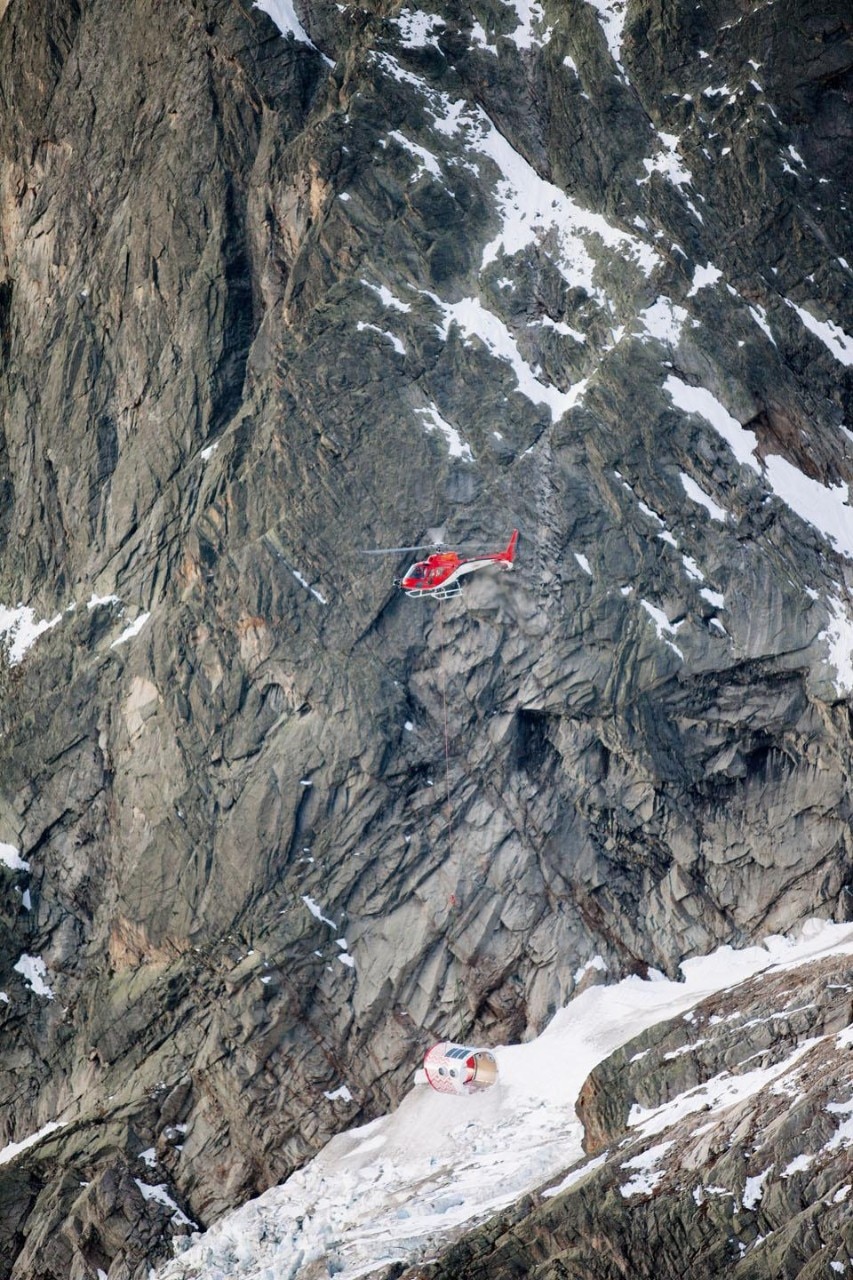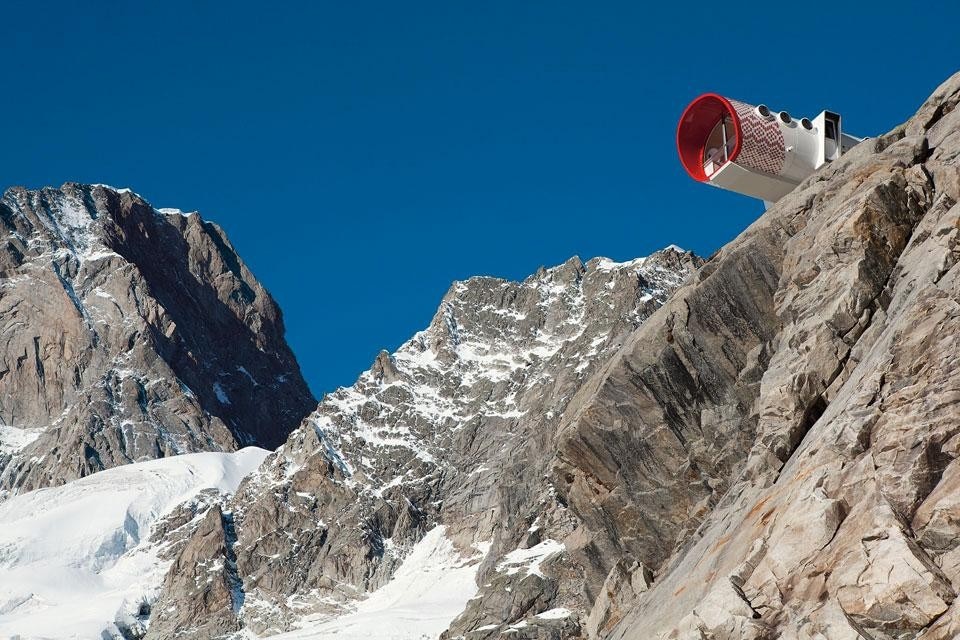Now LEAP has recaptured that quality with an unashamedly antimimetic design which, however, overcomes the long list of permits and restraints involved in such a sensitive context. This feat was accomplished not by re-examining the forms, but rather the reasons for an unattended high-altitude shelter, by responding to a cultivated brief specified by the SUCAI (the Italian Alpine Club University Subsection) in Turin that commissioned it. In addition, the opportunity was seized to set up a design workshop which not only reinvents a type of construction in itself elementary (typically little more than a metal-clad wooden hut), but also updates the theme of mountain prefabrication as well as a certain approach to industrialised building, the history of which has accustomed us to think of it in terms of monocultures (of concrete, wood and so on). A mixture, on the other hand, which sets out the problem of their combined integration in a small but complex product, is a departure from that tendency.
The project is substantially horizontal, providing enough room to accommodate 12 persons and not too difficult to transport. This size limit entailed a maximum floor surface of 8 by 2.4 metres, laid out on a strictly ergonomic basis.
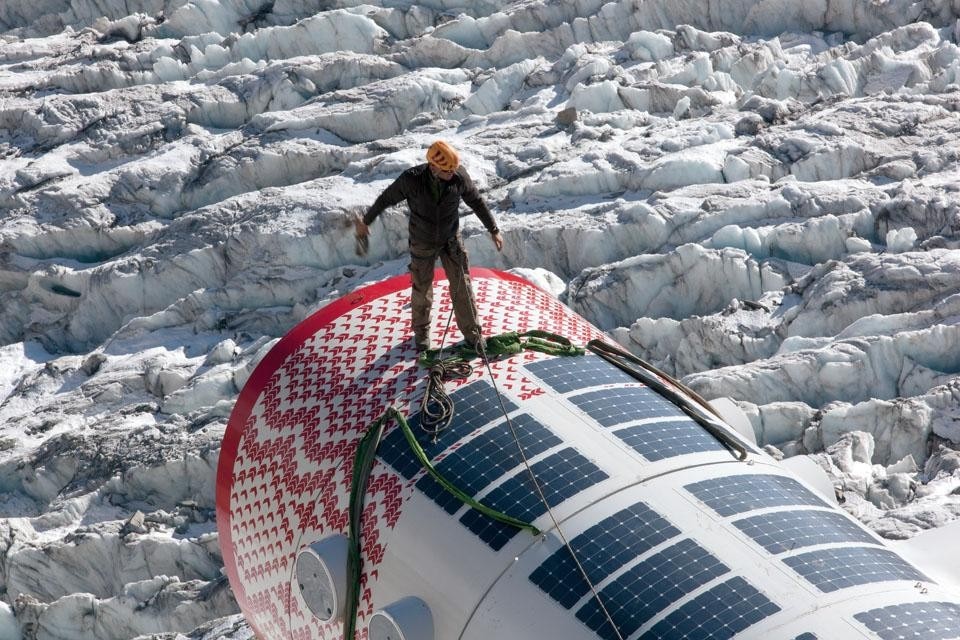
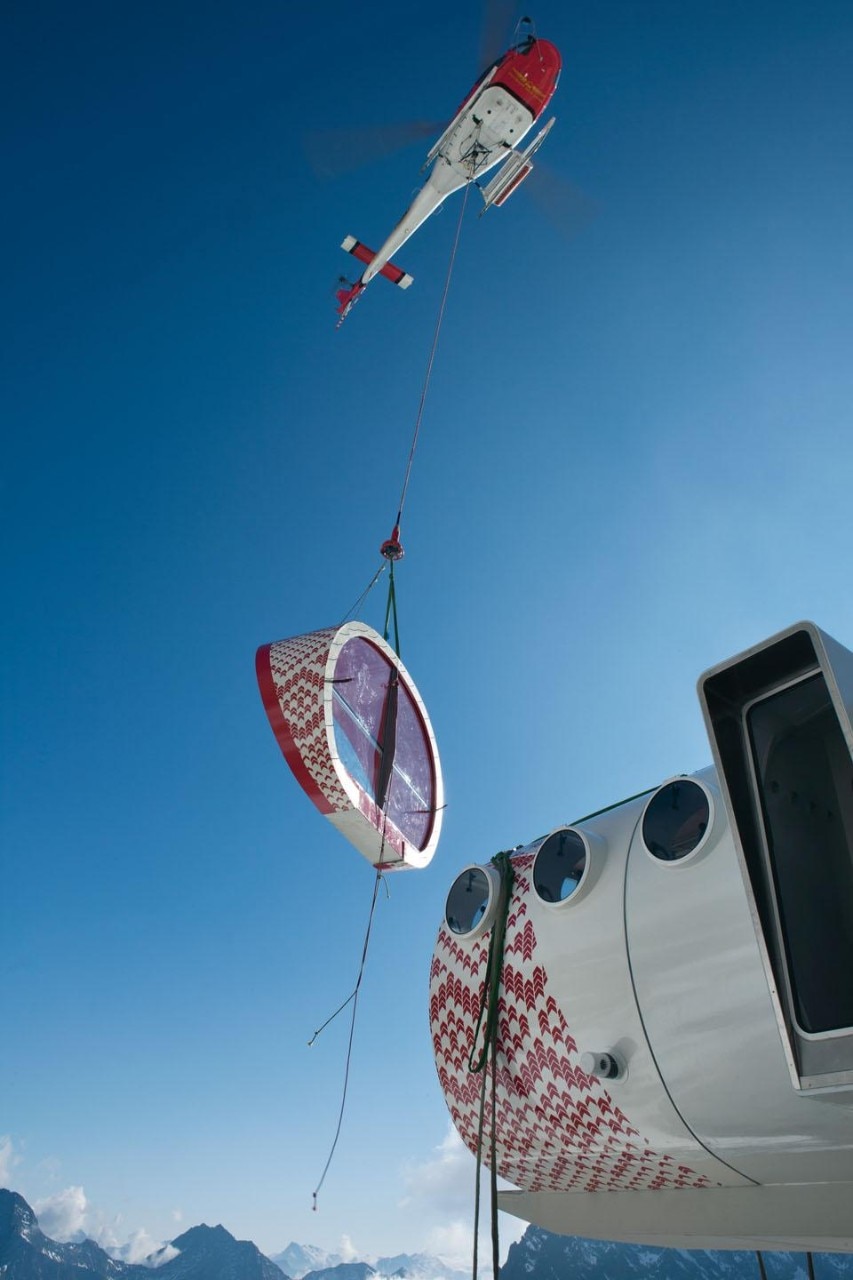
Michele Calzavara, Architect
In view of the necessity to minimise operations in situ, the project was conceived in terms of modules right from the start. These would be manufactured in the valley, transported by "standard" helicopter.
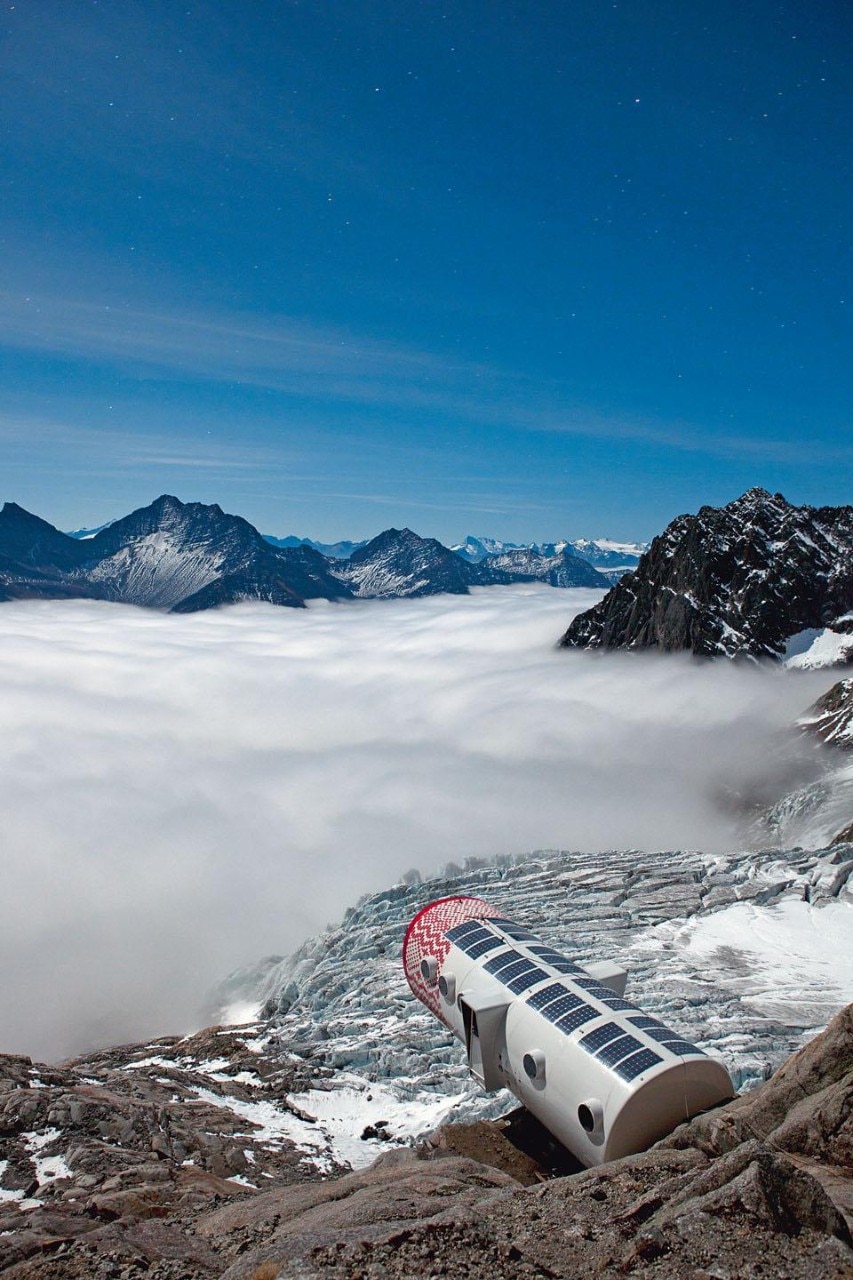
Design team: Marilena Cambuli, Edoardo Boero
Brand identity l.e.a.p.: UN Design, Massimo Teghille
Structural Engineering: Luca Olivari / Olivari Composite Engineering (strutture in compositi), Andrea Bruzzone (strutture generali)
Electrical Engineering: Carlo Sasso, EDF ENR spa, Giampaolo Pittatore, Enrico Pons
Geology: Alberto Morino (nivologia e valanghe), Federico Valfrè di Bonzo
Client: CAI sezione di Torino, sottosezione SUCAI, scuola di scialpinismo
Total floor area: 29 m2
Cost: 200,000 €
Design phase: 09/2009—12/2010
Construction phase: 05/2011—10/2011
Manufacturers: Poligamma, GVM Arreda, Plat Andrea
Sponsors: Regione Autonoma Valle d'Aosta, Fondo Rifugi Club Alpino Italiano, Fondazione Cassa di Risparmio di Torino, Gore-Tex, EDF ENR Solare
